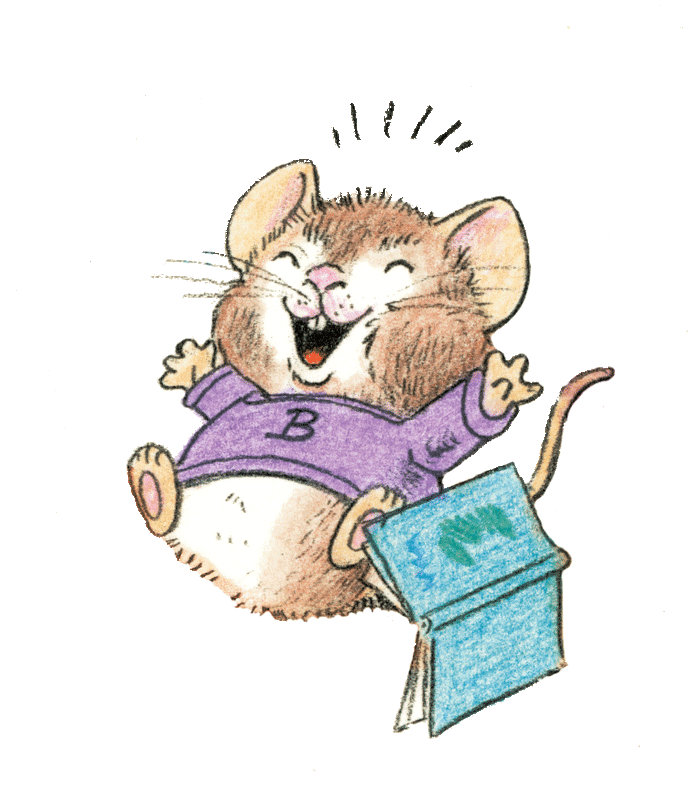We love to hear from teachers!
| This guest blog post is by Maria Walther, a first grade teacher at at Gwendolyn Brooks Elementary School in Aurora, IL. Learn more about Maria Walther at www.mariawalther.com and on Twitter @mariapwalther. “I love Benny and Penny books, do we have any more?” It was January when I finally heard those words from Noah, one of my most reluctant first-grade readers. Luckily, I was able to answer, “Yes!” and we rushed right over to the graphic novel basket to gather the other books in the series. A graphic novel basket? In first grade? YES! and YES! Since I discovered that TOON comic books that are perfect for my primary-grade learners, I’ve hooked many readers who gravitate toward this genre. So, like all of the other genres I share with my students, I teach them what they need to know to successfully, and joyfully, read these books. |
Reading a comic is different than reading a story. Like informational text, comics have their own unique visual features that support readers in comprehending the text. To prepare my students to independently read graphic novels, I teach them how to use the following strategies:
- Look carefully at the illustrations before and after reading the text.
- Integrate the visual information with the text to make meaning.
- Infer how a character is feeling by looking carefully at their face and body.
- Predict or “think ahead” as you read. Confirm or revise your predictions based on the clues.
- Distinguish between speech bubbles and thought bubbles.
- Notice and use ending punctuation, bold print, and other creative convention clues (words written in all capital letters, colored print, and so on) to read fluently with expression.
- Reread or review the illustrations when meaning breaks down.
| When I introduce these books and/or highlight the strategies above, I project the book using a document camera so that the kids and I can interact with the text as I read aloud. An interactive read aloud of the book Benny and Penny in the Toy Breaker (Hayes, 2010) might begin this way: Before Reading: “Today we’re going to read a different kind of book. It’s called a comic or graphic novel. Has anyone ever heard or read this type of book before? As we’re reading, I’m going to show you some strategies that will help you to better understand what is happening in the story. Let’s get started!” Cover: “Let’s look at the cover. What do you notice?” [Draw students’ attention to the title and the illustration where all of the toys are broken and Benny’s looking at them with a magnifying glass.] “Can you figure out which character is Benny and which is Penny? What is Benny looking at with that magnifying glass? Who do you think Benny is talking about when he says, ‘He is back!’? Think about the title of the book. Hmmmm! I guess we better read on to answer those questions.” |
Title Page: “What are Benny and Penny doing on the title page? Why do you think they are doing that?”
Page. 5: “Wow! This page looks a little different. What do you notice? Where do I start reading?” [Invite readers to come up and point to the title, discuss the speech bubbles, and so on.] “I notice when I’m reading I have to pay careful attention to the ending marks (or signals to readers), so I know how to read what Benny and Penny are saying. Listen to how my voice changes when I read the sentence that ends with a period, compared to those that end with a question mark or exclamation mark.” [Reread page.]
Page. 5: “Wow! This page looks a little different. What do you notice? Where do I start reading?” [Invite readers to come up and point to the title, discuss the speech bubbles, and so on.] “I notice when I’m reading I have to pay careful attention to the ending marks (or signals to readers), so I know how to read what Benny and Penny are saying. Listen to how my voice changes when I read the sentence that ends with a period, compared to those that end with a question mark or exclamation mark.” [Reread page.]
Obviously, slowing the pace to surround a text with rich conversation takes time, so I usually allot a few days finish the whole book. As with any activity in a primary-grade classroom, I would suggest spending about 7-10 minutes engaged in interactive read aloud. Highlight one or two strategies each time you read. Then, leave your students “in suspense” until the next time! Before you know it, your students will be saying, “I love Benny and Penny books, do we have any more?”
AND YES WE DO...Order the entire set of this beloved Benny and Penny series!









